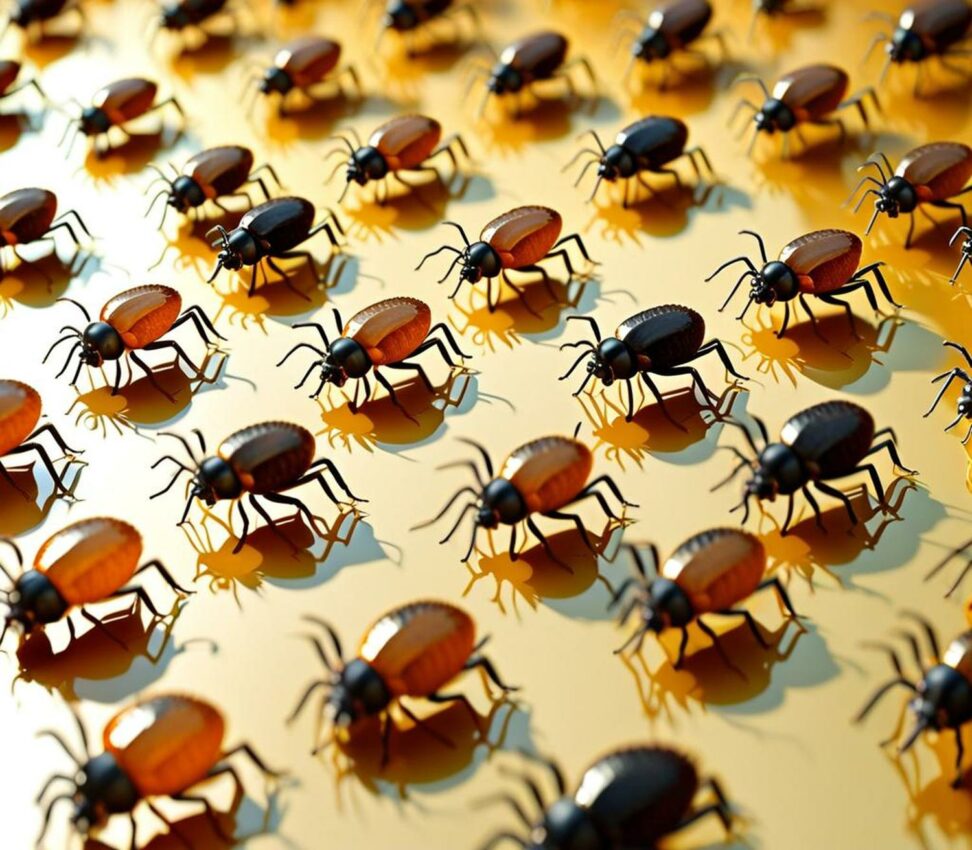The Ultimate Guide to a Mite-Free Kitchen
Finding tiny crawling bugs in your kitchen can be unsettling. Even more disturbing is the thought that these microscopic pests could be contaminating your food. Kitchen mites are a common nuisance that feeds on a variety of household foods. Left unchecked, an infestation can ruin ingredients and spread to other areas in your home.
Getting rid of existing mites while keeping new ones out takes vigilance. But you can protect your cook space and stored food with some diligent prevention and control measures.

Tiny Pests Causing Big Problems
Mites are minuscule spider-like creatures measuring only 1/100 to 1/4 inch long. They are just barely visible to the naked eye. Different mite species commonly inhabit kitchens, especially in humid, warm environments.
Grain mites and flour mites feed on flour, cereals, grains, and other finely ground foods. Psocids, also called booklice, eat grains and cereals too but prefer rice, spices, and dried fruits. Mold mites live on the microscopic mold that grows in damp crevices and can be nearly impossible to see.
A mite infestation often starts from contaminated packaged foods. Bulk bin items, pet food, and other dry goods purchased from stores can unknowingly harbor mite eggs and transfer them into your kitchen.
The Dangers
Mites contaminate food as they crawl over surfaces, leaving behind allergens in feces and decomposing bodies. Their presence raises the risk of food borne illnesses. Some mite species even carry disease-causing bacteria like Salmonella and E. coli.
Eating mite waste or remains can trigger allergic reactions, asthma attacks, and inflammation in sensitive individuals. Psocids can cause a condition called grain itch - a rash or skin irritation from contact with the mites.
In addition to health hazards, mites will gradually destroy ingredients like flour, cereal, rice, oats, and other grains by eating them and introducing microorganisms.
Preventing Mites from Invading Your Kitchen
Stopping an infestation before it starts is the best line of defense. There are several steps you can take to make your kitchen inhospitable to mites and cut off their food sources.
Seal up Entry Points
Mites can squeeze through the tiniest of spaces to gain entry into your home. Seal any cracks in your kitchen’s walls, cabinets, baseboards, and around appliances.
Use caulk or sealant to plug gaps around pipes under sinks or behind utilities like the refrigerator. Weatherstripping under and around doors and windows keeps mites outside where they belong.
Remove Clutter and Food Sources
A cluttered, dirty kitchen is an open invitation for mites to move in. Keep pantries, drawers, and cabinets clean by:
- Getting rid of old boxes, bags, and containers of grains, baking mixes, cereals, and spices.
- Storing all foods in airtight plastic, glass, or metal containers.
- Discarding unused, expired items.
- Vacuuming shelves regularly.
Without ready access to food particles, mites will not be interested in sticking around.
Manage Moisture and Humidity
Mites prefer damp, humid environments. Keeping moisture in check deters them from invading and breeding in your kitchen.
Use exhaust fans or open windows when cooking or running hot water to vent out humidity. Fix any plumbing leaks right away. A dehumidifier keeps overall moisture levels under 50% to make conditions less welcoming.
Getting Rid of an Existing Mite Problem
If you already see signs of mites, you'll need to take action to destroy the pests and remove their breeding grounds. Be diligent and thorough - just a few surviving mites can restart an infestation.
Discard Heavily Infested Foods
Dry goods with a heavy mite presence are not worth saving. Get rid of any grains, flours, cereals, spices, and other ingredients with obvious webbing, clumping, or visible mites.
Freezing kills mites, so you can place food with light infestations in the freezer for at least 4 days before using. Make sure you seal it in a plastic bag first to deprive mites of oxygen.
Use Traps and Natural Pesticides
Sticky traps monitor mite populations and gauge the effectiveness of your control efforts. Place traps in cabinets and pantries and check them often to look for decreases in mites caught.
Natural sprays made with eucalyptus, peppermint, or clove oil kill mites on contact. Insect growth regulator products prevent nymphs from maturing into adults.
Wipe down shelves, countertops, and cabinets with equal parts vinegar and water or another natural disinfectant. Get into cracks and crevices where food debris collects.
A thorough vacuuming with a HEPA filter removes mites from carpets, tiles, drapes, and other kitchen surfaces. Steam cleaning appliances, walls, and cabinets also eliminates mites.
Sealing up entry points, reducing humidity, and depriving mites of food sources all help make your kitchen permanently mite-free. With diligence, you can protect your space from these tiny pests and the big problems they bring.